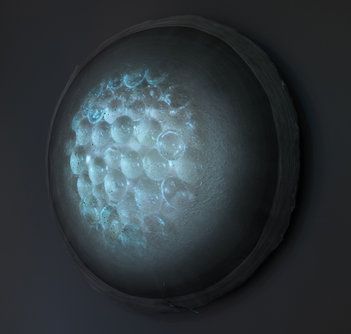
Æsa Björk
Graduated from the Edinburgh College of Art at the University of Edinburgh, in 1997. As an exchange student, she also studied in the studio of the Prof. Vladimír Kopecký at the Academy of Arts, Architecture and Design (VŠUP), Prague, the Czech Republic, 1994. She established the S12 Open Access Studio and Gallery in Bergen, Norway, 2005–2007; she worked as the director of the S12, 2007–2011, and she’s been the Artistic Advisor of the S12 since 2014.
Æsa Björk was a Visiting Artist at the School of Art and Design, Sculpture Dimensional Studies, the New York State College of Ceramics at Alfred University, Alfred, NY, USA, 2011–2014. She has also been an instructor at the Pilchuck Glass School, WA, USA, 2016.
She received the Andrew Grant Bequest at the Edinburgh College of Art, 1996, and the Pilchuck Glass School Summer Course Scholarships in 1997, 2001, 2005, 2009, and 2015. She has received many international honours and awards, including: the Emerging Artist of Residence, the Pilchuck Glass School, USA, 1999; the Honorary Diploma of the Jutta Cuny-Franz Foundation, Germany, 1999; Artist in Residence, the Corning Museum of Glass, Corning, NY, USA; a government grant for young artists, the Arts Council Norway, 2000–2002; an artist working grant from the Arts Council Norway, 2007–2009 and 2015–2019; various grants from the City of Bergen.
She has participated in 9 solo exhibitions in Norway. She has also participated in 39 group exhibitions in Norway, Austria, the Czech Republic, Germany, Iceland, the Netherlands, Sweden, Turkey, the UK, and the USA, including: the Coburg Prize for Contemporary Glass, Coburg, Germany, 2014.
Her works are included in the collection of the National Museum of Art, Architecture and Design, Oslo, and KODE Art Museums of Bergen.
She works with big glass objects which she includes in larger installations. She combines glass with video projections exploring aspects of human life and existence. Through her focus on the human body, she looks at the theme of both the brutal and the vulnerable nature of transience.
